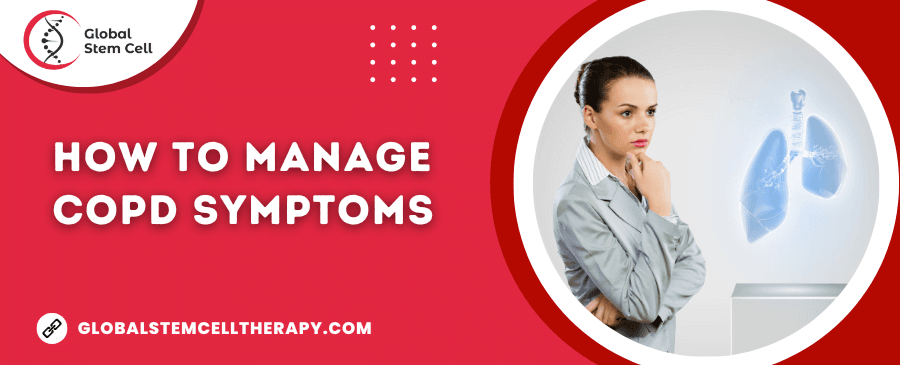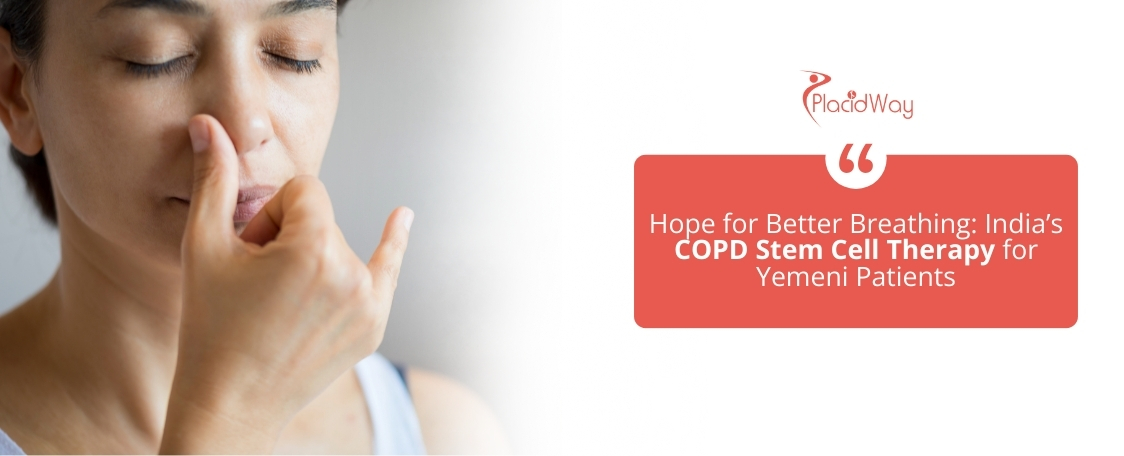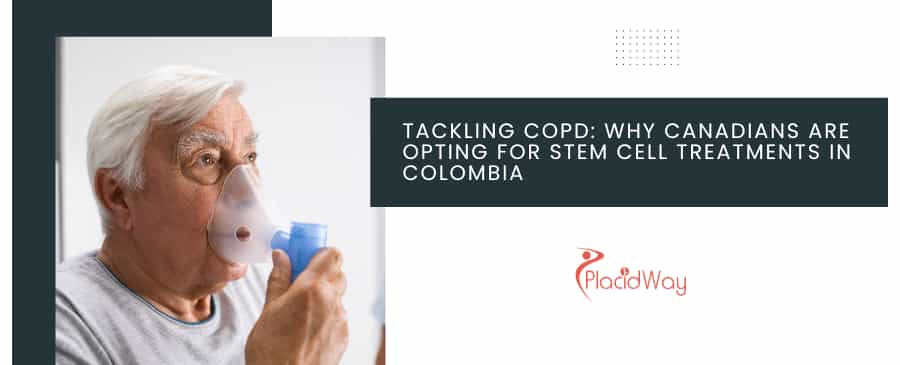
How to Manage COPD Symptoms: A Comprehensive Guide
Breathing is something most of us take for granted. But for millions of people worldwide living with Chronic Obstructive Pulmonary Disease (COPD), each breath can be a struggle. If you or a loved one are navigating this journey, you’re not alone. Knowledge can be your most potent weapon in managing COPD symptoms, and that’s precisely why we’ve created this guide.
Living with COPD isn’t easy, but with the right strategies and treatments, it’s possible to manage the symptoms and maintain a high quality of life. So, let’s dive into this guide and unlock the path to a healthier, more comfortable life.
In the words of Lao Tzu, “A journey of a thousand miles begins with a single step.” Consider this guide your first step on the road to better managing COPD symptoms.
Understanding COPD
Before we delve into managing COPD symptoms, it’s essential to understand what we’re dealing with. COPD isn’t a singular disease; it’s an umbrella term used to describe progressive lung diseases, including emphysema, chronic bronchitis, and in some cases, refractory asthma. These conditions can dramatically affect the airflow in and out of your lungs, making it harder to breathe over time.
Remember, COPD is not merely a “smoker’s disease” – while smoking is a significant risk factor, non-smokers can also develop COPD due to factors such as long-term exposure to harmful pollutants or genetic factors.
Now that we have a basic understanding of COPD, let’s explore how to manage its symptoms effectively.
Recognizing COPD Symptoms
Chronic Obstructive Pulmonary Disease (COPD) can manifest in a variety of ways, and symptoms often worsen or become more frequent over time. Early recognition of these symptoms can lead to a quicker diagnosis, enabling prompt treatment and better management of the condition. Here are the most common symptoms of COPD and what they mean:
Chronic Cough
A chronic cough is often the first sign of COPD. This isn’t your usual cough that comes with a cold and goes away after a week or two. It’s a persistent cough that lasts for eight weeks or longer, and it’s often present even when other symptoms aren’t. The cough might be dry, or it might produce a significant amount of mucus—a symptom known as chronic bronchitis. This “smoker’s cough” can occur throughout the day, but many people notice it more in the morning.
Shortness of Breath
Another common symptom of COPD is shortness of breath, also known as dyspnea. Initially, you might only notice it during physical activities, such as when you’re climbing stairs or carrying groceries. However, as the disease progresses, it can occur even during light activities or at rest. You might feel like you’re out of breath or struggling to catch your breath. Some people describe it as a feeling of “air hunger” or a tightness in the chest.
Chest Tightness
Chest tightness or discomfort is a common complaint among people with COPD. You might feel a squeezing or pressure in your chest, particularly when you’re breathing in. This is due to the reduced lung capacity and increased effort required to breathe. Chest tightness can sometimes be mistaken for a heart condition, so it’s important to get any chest discomfort checked out.
Excess Mucus
People with COPD often produce larger amounts of mucus than normal. This is your body’s response to inflammation in the lungs. You might find yourself frequently clearing your throat, especially in the morning, due to mucus buildup overnight. In some cases, the mucus might change in color or consistency, which could indicate an infection.
Frequent Respiratory Infections
If you have COPD, you might find that you’re more susceptible to respiratory infections, such as the common cold, flu, or pneumonia. These infections can cause your COPD symptoms to worsen and lead to serious complications, so it’s important to take preventive measures, such as getting vaccinated and practicing good hand hygiene.
Fatigue
Many people with COPD experience fatigue. This isn’t just ordinary tiredness—it’s a persistent feeling of exhaustion that doesn’t get better with rest. This is partly due to the extra effort it takes to breathe, but it can also be a result of poor sleep and reduced oxygen levels in the body.
These symptoms can have a significant impact on your daily life, affecting your ability to work, perform household tasks, and engage in social activities. If you recognize any of these symptoms in yourself, it’s crucial to consult a healthcare provider for a proper evaluation and diagnosis. Early treatment can help manage symptoms, slow disease progression, and improve your quality of life.
The Importance of Early Diagnosis
As the old adage goes, “A stitch in time saves nine.” This couldn’t be more accurate when it comes to diagnosing COPD. The earlier it’s diagnosed, the better the chances of slowing its progression and improving the quality of life.
The Role of Regular Check-ups
Regular health check-ups are essential, especially if you have risk factors for COPD such as a history of smoking, exposure to lung irritants, or a genetic predisposition. These check-ups can help identify COPD in its early stages, even before major symptoms appear, and can be a vital stepping-stone to managing the disease effectively.
Diagnostic Tests for COPD
A variety of diagnostic tests can help detect COPD. The most common is spirometry, a non-invasive test that involves breathing into a tube connected to a spirometer. This device measures how much air you can inhale and exhale, and how quickly you can exhale. It can detect COPD even before you have noticeable symptoms. Other tests like chest x-rays, CT scans, or arterial blood gas tests might also be used based on your doctor’s recommendation.
Remember, early diagnosis can be a game-changer. It opens the door to a range of treatment options and lifestyle changes that can significantly improve your quality of life and slow down the progression of COPD.
Practical Ways to Manage COPD Symptoms
Managing COPD is all about being proactive and adopting effective strategies that can help alleviate symptoms and improve overall quality of life. Let’s explore some of these methods:
Lifestyle Changes
One of the most empowering aspects of managing COPD is that many of the most effective strategies start with personal lifestyle changes. Small, consistent changes can lead to significant improvements in symptom management and overall health. Let’s delve into some of the key lifestyle modifications:
Quitting Smoking
Quitting smoking is the most crucial step anyone with COPD can take to slow the progression of the disease and improve their overall health. It’s like hitting the brakes on a downhill slope – it doesn’t mean the journey is over, but it gives you control over your speed and direction.
However, quitting smoking is often easier said than done. Nicotine is addictive, and overcoming that addiction can be a challenge. But remember, it’s a challenge that can be overcome. There are numerous resources available, from nicotine replacement therapies like patches, gums, or lozenges, to prescription medications, counseling services, and support groups. It’s all about finding the right combination of methods that work for you.
Healthy Diet
Maintaining a balanced, nutritious diet is like fuelling your body with premium-grade gasoline. It helps keep your body running smoothly, boosts your immune system, and provides the energy you need to combat fatigue and shortness of breath associated with COPD.
A diet rich in fruits, vegetables, whole grains, and lean proteins can provide the necessary nutrients your body needs. Foods rich in antioxidants, like berries, leafy greens, nuts, and seeds, can help combat inflammation in the lungs. If you’re underweight or losing weight due to COPD, aim for calorie-dense, nutritious foods to maintain a healthy weight. Always remember, hydration is key! Drink plenty of fluids to help keep mucus thin and easier to clear from your airways.
Regular Exercise
While exercise may initially seem daunting, especially if you’re experiencing shortness of breath, it’s a vital part of managing COPD. Regular, low-impact exercises can help strengthen your respiratory muscles, increase lung capacity, and improve overall endurance.
Start slow, maybe with a gentle walk around the block or a few minutes of yoga, and gradually increase your activity level as your stamina improves. Activities like swimming, cycling, and tai chi can be excellent for building endurance and strength without straining your respiratory system. Remember, consistency is key. Aim for a little bit of exercise each day, rather than a lot of exercise all at once.
It’s important to consult with your healthcare provider before starting a new exercise regimen. They can help create a personalized exercise plan that’s safe and effective for you.
Breathing Techniques
Breathing techniques are a powerful tool in managing COPD. They can help improve lung function, reduce shortness of breath, and make daily activities more manageable. Let’s take a look at some of the most effective techniques:
Pursed-Lip Breathing
Pursed-lip breathing is a simple technique that helps to slow down your breathing, making it more controlled and efficient. It involves inhaling through your nose and exhaling slowly through pursed lips, like you’re blowing out a candle. This technique can help reduce shortness of breath, improve oxygen levels, and promote relaxation.
Diaphragmatic Breathing
Also known as “belly breathing,” diaphragmatic breathing aims to strengthen your diaphragm, the primary breathing muscle. By training your diaphragm to become more efficient, you can improve your breathing pattern and reduce the effort it takes to breathe.
To practice diaphragmatic breathing, sit or lie down in a comfortable position. Place one hand on your chest and the other on your stomach. As you breathe in, focus on expanding your stomach outward (rather than lifting your chest). As you breathe out, your stomach should move inward. Over time, this technique can help you learn to breathe more efficiently, reducing shortness of breath and conserving energy.
Coordinated Breathing
Coordinated breathing can be particularly useful during physical activity. It involves inhaling before starting an activity, then exhaling while performing the most strenuous part. For example, if you’re lifting something, you’d breathe in before lifting and breathe out as you lift. This technique can prevent breath-holding during activity, which can lead to feeling out of breath.
Remember, while these techniques can be beneficial, they’re most effective when used in combination with other COPD management strategies, including medication, exercise, and lifestyle changes. If you’re unsure about how to do these techniques, or if they’re right for you, consult with a healthcare provider or respiratory therapist.
Medications and Treatments
Managing COPD often involves a combination of medications and treatments designed to reduce symptoms, prevent complications, and improve overall quality of life. Here are some of the most common ones:
Bronchodilators
Bronchodilators are medications that relax the muscles around the airways, helping them to open up and make breathing easier. They come in both short-acting forms, which work quickly to relieve symptoms, and long-acting forms, which are used regularly to control symptoms.
Inhaled Steroids
Inhaled corticosteroids can help reduce inflammation in the airways, making breathing easier. They’re often used in combination with bronchodilators for people with more severe COPD or frequent exacerbations.
Oral Steroids
For severe exacerbations of COPD, oral steroids may be used for short periods to reduce inflammation. Long-term use of oral steroids is typically avoided due to potential side effects.
Phosphodiesterase-4 Inhibitors
These medications are used for some people with advanced COPD to reduce symptoms, prevent exacerbations, and improve lung function.
Oxygen Therapy
For those with severe COPD or low levels of oxygen in their blood, oxygen therapy can be beneficial. This involves breathing in oxygen through a mask or nasal prongs to help ensure the body gets the oxygen it needs.
Pulmonary Rehabilitation
Pulmonary rehabilitation is a program that combines education, exercise training, nutrition advice, and counseling to help improve the well-being and functionality of people with chronic respiratory issues. It’s tailored to the individual’s needs and can be an incredibly effective part of COPD management.
Remember, COPD treatments are highly individualized. What works best will depend on your specific symptoms, the severity of your COPD, your overall health, and your lifestyle. Always consult with your healthcare provider for the best treatment plan for you.
Mental Health and COPD
Managing the emotional aspects of COPD is just as important as managing the physical symptoms. Stress management, support groups, and mental health counseling can play a crucial role in coping with the challenges of living with COPD.
The Future of COPD Management
While COPD is a chronic condition with no current cure, the future holds promise for better management and treatments. Advancements in medicine and technology are continually providing new ways to improve the lives of those with COPD.
Advancements in COPD Treatments
Research and innovation in the medical field are leading to more effective treatments and therapies for COPD. These include new medications with fewer side effects, minimally invasive surgical procedures, and promising developments in regenerative medicine, such as stem cell therapy. While we’re not there yet, the ultimate goal is to find a cure for COPD.
The Role of Technology in COPD Management
Technology is revolutionizing healthcare, and COPD management is no exception. Smart inhalers equipped with sensors can track medication use and alert patients when it’s time for a dose, helping to prevent flare-ups. Telemedicine makes it easier for patients to consult with healthcare providers, receive treatment plans, and monitor their condition from the comfort of their homes. Wearable technology can track vital signs and physical activity, providing valuable data to doctors and patients alike.
In the words of science fiction writer Arthur C. Clarke, “Any sufficiently advanced technology is indistinguishable from magic.” And indeed, technology is bringing a touch of magic to COPD management, making it more effective, accessible, and personalized than ever before.
Final Advice
Living with COPD can be challenging, but remember, you’re not alone in this journey. Here’s some final advice to keep in mind:
Seek Medical Help Early
If you suspect you have COPD, don’t delay seeking help. Early diagnosis and treatment can significantly slow the progression of the disease and improve your quality of life.
Stick to Your Treatment Plan
Once you have a treatment plan, adhere to it. Take your medications as directed, attend all medical appointments, and follow the advice of your healthcare professionals.
Embrace Lifestyle Changes
Making healthy lifestyle changes can make a big difference in managing your COPD symptoms. Quit smoking, eat a balanced diet, get regular exercise, and ensure you get plenty of rest.
Learn and Practice Breathing Techniques
Breathing techniques, like pursed-lip breathing and diaphragmatic breathing, can help you manage shortness of breath and conserve energy.
Stay Positive and Reach Out
Living with COPD can be emotionally challenging. Don’t hesitate to seek support from loved ones or join a support group. Remember, it’s okay to ask for help.
Educate Yourself
The more you understand about COPD, the better equipped you’ll be to manage your symptoms and advocate for your health. Don’t be afraid to ask your healthcare provider questions and seek reliable information.
Managing COPD requires a comprehensive approach, but with the right care, changes to your lifestyle, and a positive mindset, you can lead a fulfilling life. Always remember, every step you take towards managing your COPD is a step towards better health and improved quality of life.




